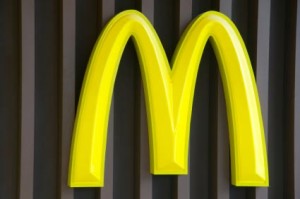 “Let’s eat out!”
“Let’s eat out!”
This 3-word masterpiece proved to be a tremendous for success as McDonald’s first slogan in 1960. Since this time, McDonalds has used over 23 slogans to date, with the most recent being the catchy jingle sung by pop icon Justin Timberlake “I’m Lovin’ It!” which was released in 2003.
This litany of slogans represents changes in consumer demand as well as changes in overall consumer culture. McDonalds claims that all of their commercial campaigns have encompassed the “…overall McDonalds experience,” always portraying …”warmth and a real slice of life.”
More like a real slice of marketing know-how.
For a company that has visited the courtroom hot seat numerous times due to the unhealthy nature of their classic cuisine, their slogans seem to be serving them well. With over 31,000 locations worldwide and still growing, and over 4.3 billion in net income, McDonalds definitely knows the secrets of the slogan. [1]
A slogan is a phrase intended to capture the essence of the ideas connected to an organization. It is a short yet powerful way to present product features and benefits using only a few punchy words. The idea is for the slogan to make the consumer feel good when they read it. Slogans may seem to be nothing more than just another marketing approach; in actuality however, a strong current of subconscious activity runs beneath this seeming simplicity.
The importance of priming
Slogans work (or don’t work) due to ‘priming.’ The application of priming is a twofold: to influence subsequent thoughts or actions and to increase the speed at which these subsequent thoughts or actions occur.[2] The interesting element of priming is that it is almost always a subconscious process – consumers have no idea that their thoughts and actions are being controlled. Almost always…but not always.
While priming typically occurs beneath the consumer’s mental radar, there are instances when they realize they are being manipulated by a slogan. When this awareness occurs, the consumer will automatically and unconsciously react against it, trying to correct the bias that they feel the slogan has forced into their heads. Instead of returning to a neutral attitude towards the product, the consumer’s attitudes quickly heads south as they form a negative appraisal of the product. This process is termed ‘reverse priming’ and its importance is gaining notoriety in the marketing realm.[3]
In order to understand how a sloppy slogan can create the reverse priming effect, one must understand the psychological processes behind how consumers mentally process a slogan. The Elaboration Likelihood Model, a prominent theory of persuasion, outlines how this processing occurs.[4] According to ELM, the brand item, which is in symbolic form, is processed unconsciously. The associated slogan, is more complex however, as it is composed of words. Therefore, the slogan requires more complex cognitive processing, providing just enough time to raise suspicion in the mind of the consumer. Once the consumer becomes suspicious reverse priming occurs, creating the behavioral backlash.
Avoiding reverse priming
Organizations must therefore carefully craft their slogan in a way that makes the consumer feel good as opposed to feeling as if they are being duped. Experts claim slogans that are humorous, creative, and contain entertaining elements are most successful, and will bypass the reverse priming trap. This is due to the psychological rule of reciprocity; when someone does something for us, we return the favor in order to maintain cognitive equilibrium (i.e. avoid guilt). Thus, when the slogan is entertaining, the consumer will forgive the manipulation attempt and reciprocate the provided entertainment by accepting the message, and liking the product.[3]
Interestingly, both priming and reverse priming are driven by processes that lie completely out of consumer awareness. For example, researchers found that consumers will even unconsciously revolt against mere subliminal exposure to the word ‘slogan’. In one study, when the word ‘slogan’ was flashed on a computer screen without the consumers’ awareness, the consumers reported they were less willing to spend money on the product that was subsequently presented.[3]
In regards to the implementation of slogans into corporate websites, it is important to not only avoid reverse priming, but to also be conscious of where the slogan is located on the page. Remember, the Internet user scans a web page in an F-shaped pattern, placing most attention to the top left corner of the screen. Therefore, slogans are most effective when placed in this region.[5]
It seems that in order to avoid the behavioral backlash of reverse priming, and optimize the implementation of your slogan into your website, it is best to place a creative, humorous, or entertaining slogan at the top left corner of your web page. For an example of a well-created, and well-placed slogan, visit the world’s favorite fast food joint http://www.mcdonalds.com/us/en/home.html.
References
[1] “McDonalds” by Wikimedia Foundation
[2] Bargh, John E: What have we been priming all these years? On the development, mechanisms, and ecology of nonconscious social behavior.
[3] Laran, J, Dalton, A. and Andrade, E. The Curious Case of Behavioral Backlash: Why Brands Produce Priming Effects and Slogans Produce Reverse Priming Effects

